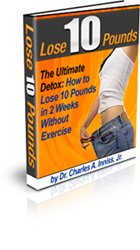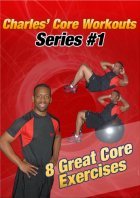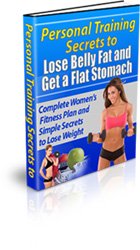 |
The Hip Flexor Muscles Role During Ab Exercises
|
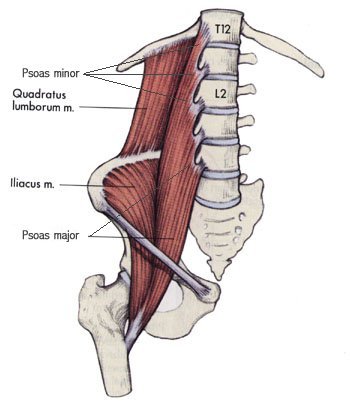 |
Role of the Hip Flexors (Iliopsoas) During Ab Exercises
This is just a brief discussion of the role of the hip flexors during ab exercises. From the anatomy picture, it is easy to see that the iliacus and psoas major attach to the femur (thigh bone), so whenever your thigh/ femur (or hip) is moving during ab exercises, your hip flexors will work.
For example, when you do leg raises on the floor, hanging leg raises, sit ups, or bicycle crunches your hip flexors will work with your abdominal muscles.
If we look at normal everyday activities like walking or climbing stairs and sports movements such as running and kicking, we will notice that the hip flexors play an important role in movement and stabilization of the hip. The iliopsoas must be strong just like any other muscle, so it is okay to exercise and work this muscle.
Caution Regarding Exercising Your Hip Flexors
Physical therapists generally advise against aggressive and heavy strengthening of the hip flexors for the average person because of the hip flexors relationship to the lower back.
From the anatomy picture, you will notice that the psoas major attaches to the vertebrea in the lower back and the iliacus attaches to the pelvis. In addition to moving the hip and stabilizing the hip, the hip flexors can also move and stabilize the lower back and pelvis.
Whenever the psoas major is working, it adds pressure to the joints in the lower back. This is a normal and necessary biomechanical process. All muscles stabilize the joints they attach to by adding compression to the joints. Compression of a joint becomes a problem when there is a problem in the joint that is being compressed.
Here is an example of how your body is wired to protect your joints from extra compression. When you have even a slight amount of swelling in your knee, your nervous system will limit how much your quadriceps (the muscles on the front of your thigh) can contract.
Swelling is a sign of joint irritation and the body knows that it must limit further irritation. So in this case, the body will shut down the quadriceps (not let them work at full capacity) to limit how much pressure they can add to the knee.
You may have noticed on yourself or someone else that has had a knee major injury, that the thigh of the injured leg is much smaller and has much less muscle mass than the uninjured side. This is a normal physiologic process. When you have joint irritation, the muscles around that joint don't work as well because when the muscles contract they naturally add pressure to the joints.
Mother Nature is smart... people on the other hand?
Just kidding...
But, as they say, you don't know what you don't know.
If you have poor alignment (posture), a previous injury, or inflammation added pressure from aggressive exercise may irritate your joints. Most people are overweight, have sedentary jobs, poor posture, poor flexibility, previous injury to the lower back, current back pain, weak abdominal muscles, and weak lower back muscles, so this is why physical therapists generally advise against aggressive iliopsoas exercises.
Let's look a little closer at one of the ab exercises that involves the hip flexors
Leg Raises and Lower Back Pain
Leg raises can be a useful ab exercise, but let's talk a little more about what's going on during leg raises.
When you perform leg raises, your abdominal muscles work with your hip flexors. Your abdominal muscles work to keep your pelvis stable, while your hip flexors work to move your legs.
This is actually an important exercise to master, but here are the problems that may arise.
Problem #1: Your Abdominal Muscles are too Weak to Keep Your Pelvis and Lower Back Stable!
Our legs are heavy, so our abdominal muscles must work really hard to keep our pelvis and lower back in the correct position. As the legs lower towards the floor, there is a tendency for the lower back to arch.
When the lower back arches, there is extra pressure placed on the joints of the lower back. The job of the abdominals is to stop the lower back from arching excessively, so if you have weak abdominals you will likely have extra pressure on your lower back when you perform leg raises.
Ab Workout Tip: You can build up your abdominal strength and protect your lower back by limiting your range of motion during leg raises. Begin with your hips at 90 degrees. Lower your legs until you feel your pelvis tipping and your lower back arching; at that point reverse directions and return to the starting position.
As you move closer to the floor more pressure is placed on your lower back so limit your range of motion and move only as far as you can control.
Workout Tip: If you have trouble keeping your legs straight in the air, it is likely a sign of poor flexibility in the hamstring muscles. Here are some hamstring stretches that can improve your form during this ab exercise.
Workout Tip: If you have any trouble performing leg raises, begin by mastering reverse crunches. Reverse Crunches can help to strengthen your abdominal muscles and increase the flexibility in your lower back, and they are a great exercise for beginners and athletes.
Problem #2: You Have Bad Posture and Bad Alignment in Your Spine!
Here are 2 simple statements about posture. When your posture and alignment are ideal, you have the least pressure on your lower back and the most stability. And, when your posture is not ideal, you have more pressure on the joints of your lower back and less stability in your lower back.
Bad Posture adds pressure to your lower back.
Problem #3: Your Hip Flexors add Pressure to the Joints of the Lower Back!
This problem was discussed above in the normal process of muscle contraction, but if you have joint irritation in your lower back aggressively working your hip flexors can add excessive pressure to your joints.
Again this problem is really only a problem if you have lower back injuries.
Workout Tip: Everyone should include iliopsoas stretches in their core and ab workout routines, so try stretching your iliopsoas before and after your ab workouts.
Summary of Leg Raises and Lower Back Pain: If you have weak abdominals, poor posture, and a lower back injury, then, full straight leg raises all the way to the floor are probably not the best ab exercise for you.
Also, remember the information on this site is only for informational purposes and is not intended to diagnose or treat injuries or medical problems. If you are experiencing lower back pain, you should seek in person counsel from a licensed health professional.
Conclusion
You should always listen to your body and consult with professionals when you begin any exercise program or new regimen.
Read my page on finding the best abdominal exercise for your workouts, and visit the Picture Directory of Abdominal Exercises to see pictures of all the ab exercises on this site.
See pictures about and learn basic abdominal muscle anatomy.
For more information on hip pain visit www.EveryDayHealth.com.
Everydayhealth.com is a premiere health website that has information on the diagnosis, treatment, and management of hip pain.
Yours in Health
Dr. Charles PT/PT
Return to Fitness Articles from The Hip Flexor Muscles Role During Ab Exercises
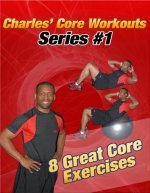 |
P.S. Check out my Core Workout Video!
The video can be purchased as DVD's and shipped to your home.
Get the DVD for $7.95 + sph
Click Here to Order Your DVD Today!
Click to learn more about the core training.
My Weight Loss and Fitness Program for Women

Women's Fitness and Weight Loss Program:
Personal Training Secrets to
Lose Belly Fat and Get a Flat Stomach
If you want to lose weight and get a flat stomach, my ebook
Personal Training Secrets to Lose Belly Fat and Get a Flat Stomach is the answer to your prayers.
It's more than just a list of the best ab exercises.
It's a Complete Women's Fitness Plan with Simple Secrets to Lose Weight and Tone Your Stomach.
